- Home
- Penelope Lively
Treasures of Time
Treasures of Time Read online
PENGUIN DECADES
Treasures of Time
Penelope Lively was born in Cairo in 1933, and spent her childhood there – a childhood recalled in her book Oleander, Jacaranda. She came to boarding school in England at the age of twelve, and subsequently read Modern History at Oxford. She married an academic, Jack Lively, who became Professor of Politics at Warwick University. Penelope Lively was already an established and successful writer of fiction for children when she published her first adult novel, The Road to Lichfield, in 1977. To date she has published sixteen adult novels, most recently Family Album (2009). She had two novels shortlisted for the Booker Prize before winning it in 1987 with Moon Tiger, and remains the only writer to have won both the Booker Prize and the Carnegie Medal, the two most prestigious literary awards for adult and children’s fiction. She was made CBE in 2002.
Treasures of Time was Penelope Lively’s second novel, published in 1979. It won the Arts Council National Book Award, judged by Kingsley Amis, and displays many of the strengths of her fiction: what the critic Anthony Thwaite has called ‘her authority and fluency on the subject of the persistence of the past’.
Selina Hastings is a writer and journalist. She is the author of four biographies: Nancy Mitford, Evelyn Waugh (winner of the Marsh Biography Prize), Rosamond Lehmann and The Secret Lives of Somerset Maugham. She has also written a number of books for children, including a complete retelling of the Bible.
Treasures of Time
PENELOPE LIVELY
PENGUIN BOOKS
PENGUIN BOOKS
Published by the Penguin Group
Penguin Books Ltd, 80 Strand, London WC2R 0RL, England
Penguin Group (USA) Inc., 375 Hudson Street, New York, New York 10014, USA
Penguin Group (Canada), 90 Eglinton Avenue East, Suite 700, Toronto, Ontario, Canada M4P 2Y3
(a division of Pearson Penguin Canada Inc.)
Penguin Ireland, 25 St Stephen’s Green, Dublin 2, Ireland (a division of Penguin Books Ltd)
Penguin Group (Australia), 250 Camberwell Road, Camberwell, Victoria 3124, Australia
(a division of Pearson Australia Group Pty Ltd)
Penguin Books India Pvt Ltd, 11 Community Centre, Panchsheel Park, New Delhi – 110 017, India
Penguin Group (NZ), 67 Apollo Drive, Rosedale, North Shore 0632, New Zealand
(a division of Pearson New Zealand Ltd)
Penguin Books (South Africa) (Pty) Ltd, 24 Sturdee Avenue, Rosebank, Johannesburg 2196, South Africa
Penguin Books Ltd, Registered Offices: 80 Strand, London WC2R 0RL, England
www.penguin.com
First published by William Heinemann Ltd 1979
Published in Penguin Books 1986
Reissued with a new introduction in Penguin Books 2010
Copyright © Penelope Lively, 1979
Introduction copyright © Selina Hastings, 2010
The moral right of the author and of the introducer has been asserted
All rights reserved
Without limiting the rights under copyright reserved above, no part of this publication may be reproduced, stored in or introduced into a retrieval system, or transmitted, in any form or by any means (electronic, mechanical, photocopying, recording or otherwise), without the prior written permission of both the copyright owner and the above publisher of this book
ISBN: 978-0-14-195805-7
Contents
Introduction
Chapter One
Chapter Two
Chapter Three
Chapter Four
Chapter Five
Chapter Six
Chapter Seven
Chapter Eight
Chapter Nine
Chapter Ten
Chapter Eleven
Chapter Twelve
Chapter Thirteen
Chapter Fourteen
To Gina and Murray
Introduction
Treasures of Time, first published in 1979, is a novel of serial excavation. With characteristic subtlety and wit, Penelope Lively explores intricate themes of appearance and reality, of the power of memory and of the warping and shaping that occurs with the passing years. In all her fiction Lively shows herself intuitively alert to the influence of the past on the present: in The Road to Lichfield, for instance, in Next to Nature, Art, in Moon Tiger (winner of the 1987 Booker Prize), she pursues the idea of the invisible influence of previous eras, both chronological and environmental, on human experience.
Treasures of Time deals both figuratively and literally with disinterment. The point of departure for the plot is the arrival at a country house in Wiltshire of a television team to film a programme on the distinguished archaeologist Hugh Paxton, who died some years ago. Paxton’s most famous dig, the one that made his name, was on a local site, where he uncovered a fabulously rich hoard of prehistoric treasure. Now the whole subject is to be unearthed again, this time for BBC television, and the surviving participants interviewed about their recollections. But inevitably the past has been reinvented, and in this delectable comedy of manners Lively adroitly uncovers stratum after stratum of delusion and self-deceit. As well as other participants, three members of Paxton’s family were present at the dig: his wife, his sister-in-law, and his daughter, then only a child; and with all of them the official version is interestingly at odds with what actually happened.
Hugh Paxton’s widow, Laura, is the most excited about the programme, thrilled by the prospect of taking the starring role. Chic, snobbish and self-absorbed, Laura’s life these days lacks excitement: money is in short supply and she has been obliged to share the house, Danehurst, with her sister, Nellie. Now an invalid confined to a wheelchair, Nellie as a young woman had worked closely with Hugh on his excavations, her admiration for him, painful and unspoken, extending far beyond the purely professional. Most reluctantly involved in the present enterprise is Laura’s prickly daughter, Kate, down from London for the weekend with Tom, her boyfriend. Kate is decidedly wary of the prospect of a camera-crew zooming in on her family history, with all its subterranean cruelties and betrayals. And yet both she and Tom are themselves professionally involved in investigating the past, Tom writing a thesis on the eighteenth-century antiquarian William Stukeley, and Kate with a career organizing exhibitions of ancient implements in county museums. (For Tom, now, memories of Kate ‘would be for ever associated with ploughshares and sickles … the sight of a threshing machine or butter churn would, for the rest of his life, bring an expectant lift of the heart’.)
Despite Kate’s anxiety, however, when the young man from the BBC arrives he appears to be not threatening at all. Tony Greenway, if slightly colourless, is agreeable and intelligent, skilfully combining professional expertise with a nice line in courteous deference. The latter is particularly appreciated by Laura, who loses no time in showing off about her husband’s reputation, keen to impress on Tony the frightfully important part she herself had played and the utterly fascinating life the two of them had led. But as Tony listens and probes, looks at photographs and walks up over the downs to examine the site, more, much more, begins to emerge: uncomfortable memories are revived, awkward situations revisited, and subtly, obliquely, a story begins to take shape of far greater interest and complexity than that originally designed to be shown on television.
Penelope Lively is an outstandingly accomplished novelist, and one of her greatest skills is a deftness of touch. She can introduce a matter of vital importance with a brushstroke so light the reader is barely aware of it: somebody pauses a second too long before answering, perhaps, or the eye is drawn to an apparently minor detail; and yet in that moment everything changes, and almost subliminally we know something significant has been revealed. Thus we absorb the fact that
Laura’s marriage was far from the flawless union that she promotes, and that there is a crucial but unspoken part in it played by her dowdy sister. Flighty Laura, uninterested in archaeology, had been amused by Nellie’s willingness to assist Hugh on his digs, and rarely thinks back to her own first meeting with her future husband; but Nellie remembers it clearly, remembers her ravishing younger sister ‘looking, I thought, a bit bored because Hugh and I were talking shop … And in the middle of saying something I saw his eyes on her, and how they were, and all of a sudden the day wasn’t so nice after all’. Similarly, it is these tiny shards of the past working up through layers of buried memory that gradually reveal how Kate, difficult, defensive Kate, has been irretrievably damaged by what happened between her parents during her childhood.
Each of the main characters is brought into focus in turn, and here again it is due to the extreme sophistication of Lively’s art that we learn within a few words all we need to know about them; her possession of her characters is so complete that she can give them to us in little more than a gesture or a glance or a telling pattern of speech.
It is the newcomer, Kate’s boyfriend, through whose eyes much of the story is seen. Tom is a good-natured, scholarly young man, not particularly ambitious, and he loves Kate and pities her, too, for her angry self-destructiveness. On his first visit to Danehurst to meet her mother it quickly becomes apparent who is responsible for much of the damage. Laura has developed to a very high level the art of the crushing put-down, employed with lethal effect on her daughter, and indeed on almost anyone, however harmless, who comes within range. ‘Are you going to take me for a walk this afternoon,’ Tom cheerfully asks Kate, soon after arriving at the house. ‘ “Oh dear,” said Laura, “are you that kind of person?” ’
Laura is a gloriously comic creation with her selfishness and snobbery and her insufferable insistence on impressing everyone with her own superiority. And yet, although we laugh at Laura, we are also made aware of the sadness of her situation, of her gradual realization that she had failed her husband, of the unpalatable fact that he had married the wrong sister. It is this combining of comedy with a profound compassion for her characters that is one of the hallmarks of Penelope Lively’s fiction. She is witty and ironic, but her wit and irony are anchored in a very real sympathy for the human condition. And yet, while sympathetic she is not soft: her characters are never lightly let off, and she is uncompromising over the realities of their lives. In the love affair between Kate and Tom, she conveys its strength and sincerity, while not flinching from indicating the inevitability of its failure.
Like the archaeologist at the centre of her story, Lively is acutely aware of the immanence of the long-buried past. Again and again the eye is drawn to an ancient landscape that is yet an intrinsic part of the modern age. The family house, for instance, is on the Wiltshire downs, close to Avebury and Stonehenge, but it is also surrounded by a network of motorways and industrial estates. Heading back to London after their weekend at Danehurst, Kate and Tom ‘drove into the rushing Wiltshire darkness, where the shafts of light from juggernaut container lorries blazed down the Old Bath road (from which Charles II made a detour once, to visit Avebury and Silbury Hill in company with John Aubrey) …’. And there is an exquisitely judged episode in which the two young people drive up the motorway with a load of ancient artefacts (Roman coins, a Viking shield) for exhibition at an aggressively modern comprehensive in Birmingham.
Penelope Lively manipulates the passage of time as brilliantly as she manipulates the complexities of her fictional characters. Technically she is flawless: her vocabulary and punctuation are precise, with never an extraneous syllable, and she has a highly developed visual sense and perfect pitch for dialogue. Yet ultimately the quality that defines Lively as such a superb novelist is that rare combination of the artist’s necessary detachment with an enormous zest and enjoyment, a powerful personal involvement in the world around her. Treasures of Time, moving and very funny, is a testament to all this.
Selina Hastings
Chapter One
The alarm went. He resisted it, burrowing against Kate’s warm back. He felt her reach out, bang the clock, lie in disquieting wakefulness. She said, ‘Tom?’ He burrowed again.
She sat up, the sheet slipping from her bare breasts. ‘Do wake up. Listen, I’ve been thinking. I shall have to take you to see my mother.’
‘Mmn?’
‘You’ll have to meet my mother.’
‘Ah. It’s come to that, has it?’
‘She keeps asking about you. I can’t put it off any longer.’
‘Well, fine, then. When do we go? Who wants to put it off, anyway?’
‘Me, I suppose.’ She had got out of bed now, and stood at the dressing-table brushing her hair. He watched her bottom, lovingly. Dear Kate. Splendid Kate. Her hair stood up in a dark wiry frizz all round her head; at her waist opposing pink curves nicely echoed the shape of white knobs on the dressing-table; below, her bottom rose and fell in time with the hair-brushing. He said, ‘What?’
‘Do wake up properly, Tom, it’s gone eight. I said we’d better go this weekend.’
‘Fine.’ He yawned, clasped his hands behind his head. ‘Great. I like Wiltshire. Cradle of British archaeology. Stonehenge. Avebury. Stukeley’s stamping ground – right up my street. Immemorial landscapes. And I’d like to know more about your father, anyway. I suppose the house is stuffed with axe-heads and bits of broken pot. Is it very grand?’
‘No, it’s not, in fact it’s a bit seedy.’ She was flinging clothes out of drawers now, quarrying pants and tights and jerseys in a frenzy of irritation.
‘Are you staying there all morning or are you going to the library?’
‘I love you when you’re cross,’ he said. ‘You go red all up your neck, did you know that? I love you anyway, and I daresay I’ll go to the library. Tell me, does your mother know about my humble origins?’
‘She knows we’re getting married, that’s all that’s relevant.’
‘Ah. What a stern girl you are. Straight to the point and no nonsense. Most people’s mums would want things filled in a bit, that’s all. She’d be entitled.’
‘She isn’t like most people’s mums. You’ll see. D’you want tea or coffee?’
He said, ‘She scares you stiff or something, doesn’t she? She’s the one thing that really steams you up. I want to meet her. Coffee, and three slices of toast please – in bed?’
‘No,’ she said. ‘Up, or not at all. And I’m going in fifteen minutes precisely. Some of us have a living to earn.’
His hands, every day, were grimy from books and manuscripts. Seventeenth century grime, some of it, he supposed. He sat in the British Museum Reading Room, picking slivers of dirt from under a fingernail, stared at Stukeley’s neat, distinctive handwriting, and read that on an April day in 1719 he visited an ‘antient’ site where ‘as we sat surveying the corn growing upon the spot I did see the perfect vestigia of a temple, as easily discernible upon the corn as upon paper.’ Crop marks, clever old Stukeley. And later he had ‘met with some excellent Ale.’ Ah. It’s knowing that kind of thing that makes this kind of thing seem slightly less of a fantasy than it does a lot of the time.
William Stukeley and his contemporaries: a study of seventeenth and early eighteenth century antiquarianism. Tom Rider, M.A., D.Phil. T. P. Rider, M.A., D.Phil. Thomas P. Rider, M.A., D.Phil. Or not, as the case may be. The little crescents of dirt lay on the manuscripts. And they call this a white-collar job. Stukeley, of course, got his hands dirty – digging, surveying – and his feet, too, plodding around in the muck.
There was a portrait of Stukeley that cropped up in reproduction in innumerable works: a fattish, jowly face, pointed nose, dark, sharp eyes, grey wig, flowing white cravat, jacket of dark, shiny material. From time to time Tom had scoured this for some kind of insight into this person who must occupy three years of his, Tom’s life. Three rather crucial years, at that. Occasionally the processes of h
istorical research amazed him: we think we know about the past, learned blokes stake their professional reputations on this or that interpretation of the way things have been at this point or that. Here am I, about to contribute some seventy thousand words which will analyse and pronounce upon the way in which antiquarian studies declined from the intellectual vigour of the seventeenth century into the romantic inaccuracies of the early eighteenth, with special reference to the career of William Stukeley. I know a great deal about Stukeley; I probably know more about Stukeley than anybody else in the world; I know where he was on April 4th 1719 and I know who his friends were and in what language he addressed them and I know the broad course of his life from the day he was born till the day he died. The real Stukeley, of course, is effectively concealed by two hundred and fifty years of gathering confusion and conflicting interpretations of how the world may have appeared to other people. The real breathing feeling cock-and-balls prick-me-and-I-bleed Stukeley is just about as inaccessible as Neanderthal man.
‘Sometimes,’ he said to Kate, ‘sometimes I think of going into industry. A rather dubious branch of industry. Armaments. Or the manufacture of pop records.’
‘You don’t really,’ said Kate with tranquillity.
‘You’re happy to condemn me – us – to a lifetime of underpaid academic nitpicking? Anyway, there are no jobs.’
‘You love it. And some people get jobs – quite a lot do.’
‘Oh, you’re all right, I know. All set up with a pension. That’s what I’m marrying you for, I hope you realize.’
She worked in a museum, a civil servant, her responsibility to the past defined by grade and status. For the moment, she was in London, working on some vast new scheme of reclassification and reorganization, which she found tiresome. In the autumn, in their early courting period, she had been based at a provincial town in the process of setting up a refurbished County Museum; for Tom, now, love and lust would be for ever associated with ploughshares and sickles, with the machinery of the early glove industry, with brick moulds and stonemasons’ tools, with hay wains and milk floats and early twentieth century tractors. In this setting, he had waited patiently for her to finish her day’s work; the sight of a threshing machine or butter churn would, for the rest of his life, bring an expectant lift of the heart.

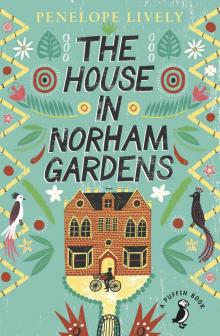 The House in Norham Gardens
The House in Norham Gardens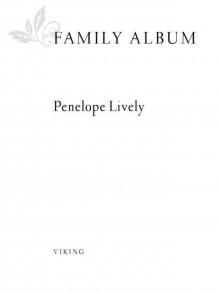 Family Album
Family Album Life in the Garden
Life in the Garden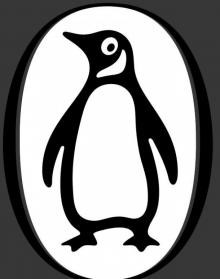 Oleander, Jacaranda: A Childhood Perceived
Oleander, Jacaranda: A Childhood Perceived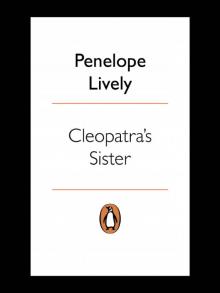 Cleopatra's Sister
Cleopatra's Sister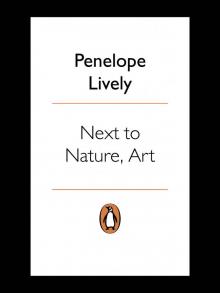 Next to Nature, Art
Next to Nature, Art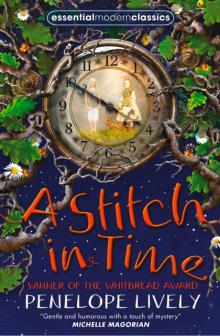 A Stitch in Time
A Stitch in Time Moon Tiger
Moon Tiger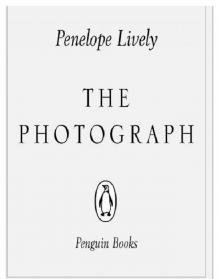 The Photograph
The Photograph Heat Wave
Heat Wave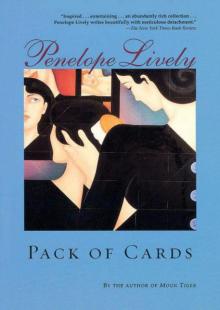 Pack of Cards
Pack of Cards Spiderweb
Spiderweb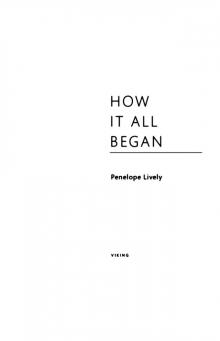 How It All Began
How It All Began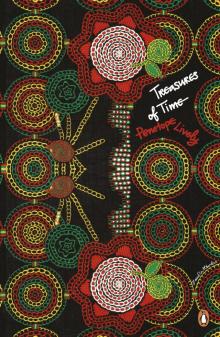 Treasures of Time
Treasures of Time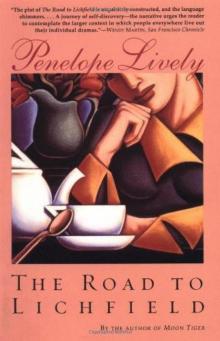 The Road to Lichfield
The Road to Lichfield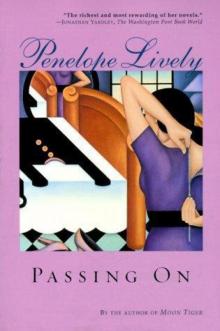 Passing On
Passing On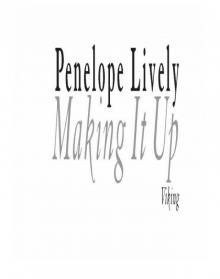 Making It Up
Making It Up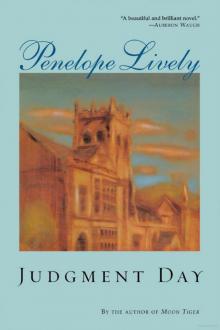 Judgment Day
Judgment Day The Purple Swamp Hen and Other Stories
The Purple Swamp Hen and Other Stories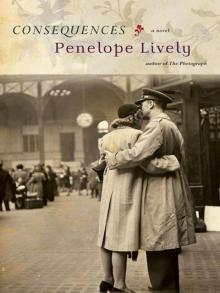 Consequences
Consequences *****Passing On*****
*****Passing On*****